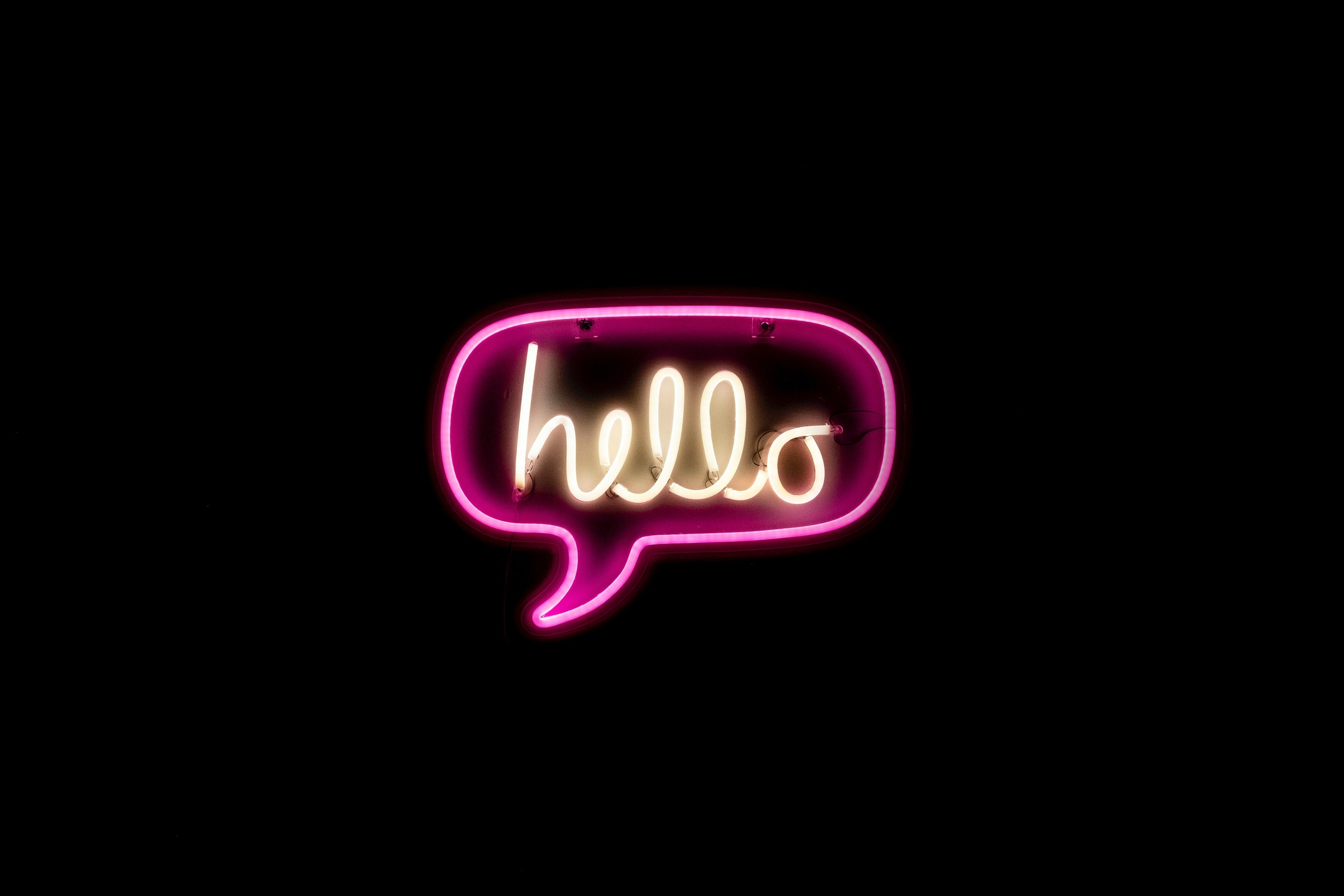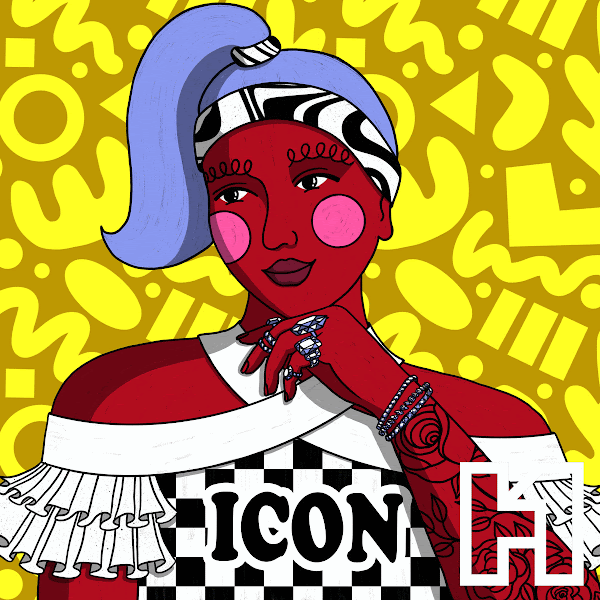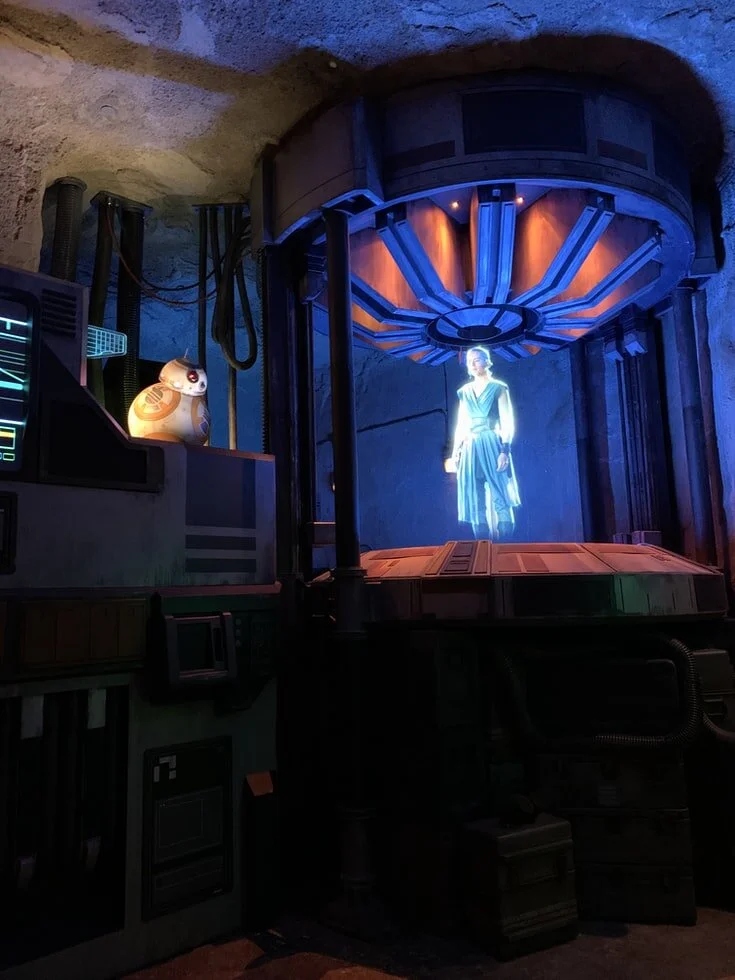Every year we review our analytics to highlight what you, our readers, have found the most compelling. In 12 short months, we have witnessed the overwhelming dominance of AI and 2022’s hottest topic (NFTs) go bust. The top 10 listed below show how YOU have followed the change over 2023.
Letter from the Editor
Hello to all of our arts, management, and technology enthusiasts from the 2023-2024 Chief Editor, Samantha Sonnet. This year’s content will be full of everything from A.I. and blockchain to the intersection of technology and climate/social justice and more! Get your reading glasses ready, and settle in for another great year.
“Pinkwashing” NFTs: Risks and Opportunities
Deemed as a white, male-dominated space, many female artists and celebrities have voiced their enthusiasm for inviting more women into the Web3 movement. While many NFT projects focus on education, philanthropy, and providing visibility for women creators, some have been criticized for using social justice issues as selling points, undermining their risks and actual contribution to the cause. Is NFT an outlet for women to express and achieve financial independence, or is it another “tokenizing” marketing gimmick to exploit female audiences? What are some of the risks and opportunities with “pinkwashing” the NFT market?
Examining Digital Collaboration in Theatre Production Processes
Theatre is known for being a highly collaborative art form. At least pre-pandemic, it was also an art form customarily shaped by in-person ideation and collaboration. Now that theatremakers across the globe have spent 19 months rethinking their relationship to in-person production and experimenting with virtual alternatives, the question emerges - how is collaboration in theatre production process evolving from its ancient and analog roots?
Holograms: Where Physics & Art Collide
“Help me Obi-Wan Kenobi. You’re my only hope.” The iconic opening scenes from the original Star Wars film, A New Hope, epitomize what we think of when we consider the word “hologram.” In the minds of science fiction fans everywhere, the hologram is a concept that evokes feelings of wonder at the possibilities for technological advances. Whether someone is a fan of science fiction or not, it can be agreed that holograms have had a distinct impact on the arts. Although they were not initially intended for anything other than scientific use, holograms made their way into the public’s imagination and conjured up ideas of the future of technological advances.
Changing The Way You See With Augmented Reality
When looking ahead at what will be the most exciting technology for the arts in the coming year, augmented reality is bound to pop up in the conversation. You may be familiar with augmented reality already. The National Football League has taken advantage of this technology for years to project lines of scrimmage and game time information onto the field in real-time during television broadcasts. So what exactly is augmented reality (AR)? According to Wikipedia:
Augmented reality (AR) is a term for a live direct or indirect view of a physical, real-world environment whose elements are augmented by computer-generated sensory input, such as sound or graphics.
AR layers digital elements on top of our view of the everyday world. This overlay can be done in a number of ways: through the use of handheld devices like smartphones, through desktop computers with a webcam, by wearing specialized headsets, or by projecting a digital images/animations onto a real world location.
Since AR has the possibility to create such a unique visual experience, it naturally has attracted adopters from the creative community. Here are just a few cool projects taking advantage of AR:
DIY Day MoMA – Augmented Reality Art Invasion! On October 9th, 2010, Sander Veenhof and Mark Skwarek decided they would circumvent the traditional art world and host their own exhibition at the Museum of Modern Art using AR. The artists took advantage of the augmented reality viewer app Layar, currently available only on iPhone and Android devices, to create a virtual exhibition of digital works. By downloading the Layar app and loading the “AR Exhibition” layer, anyone with a camera-enabled smartphone or mobile device can view numerous digital artworks throughout MoMA. This includes both 2-D and 3-D images and animations and an additional 7th floor that only exists in the world of AR. The digital artworks have continued to be on display since DIY Day wrapped up in October.
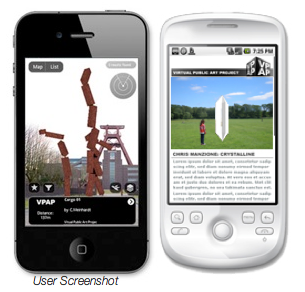
The Virtual Public Art Project Also utilizing the Layar app, the Virtual Public Art Project (VPAP) takes the idea of AR artworks one step further by placing pieces around the globe. The artworks can be viewed in the round and from multiple perspectives, just as you would be able to with a real piece of public art. Check out some of the current works on display on VPAP’s website . If you’re interested in creating your own piece of AR artwork for the public, VPAP puts out multiple calls for submissions.
The Macula Project – Mapping 600 years of history The Macula Project is comprised of a group of artists exploring the relationship between image, sound and the viewer. The city of Prague was searching for a way to celebrate the 600th anniversary of the astrological clock tower situated in the center of the city and turned to the Macula Project for a creative solution. The artists at the Macula Project turned to AR for the project and projected this stunning work that took the audience through the 600-year history of the clock tower. Macula was able to achieve this by digitally mapping the building beforehand and tailoring their animation so when it ran through a digital projector, the perspective lined up perfectly with the real life clock tower.
The Getty Museum – Exploring the Augsburg Display Cabinet in 3-D
If there is one frustrating roadblock shared across the gamut of art lovers, it’s the frustration over not being able to personally handle and explore a piece of art in a museum. The Getty Museum understood this burning desire and took advantage of AR technology to let their visitors have a more in-depth exploration of one of the pieces from their decorative arts collection. Using an online program launched within a web browser, a computer’s built-in webcam, and a printed out “AR tag”, an art lover can handle a 3-D model of a 17th century collector’s cabinet. By rotating and tilting the AR tag, the cabinet will spin 360 degrees and various doors can be opened and explored.
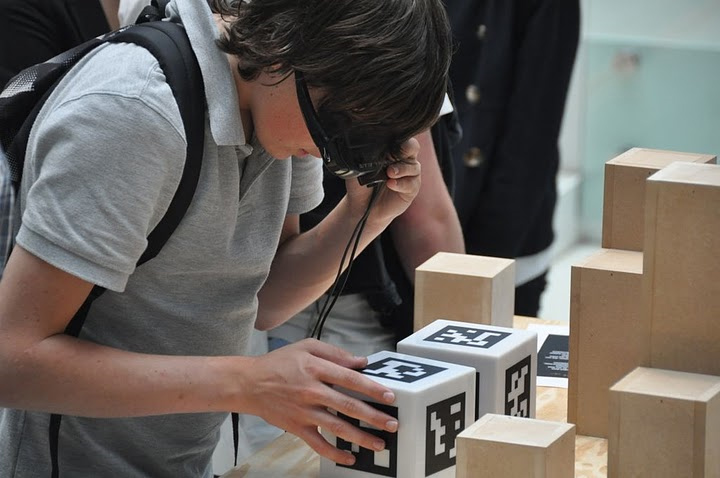
The University of Gronigen – Giving students X-ray vision Part of a permanent exhibit in their Hall of the Bernouilliborg, the University of Gronigen teamed up with Science LinX and Nanopodium to create a unique science experience for their students. The exhibit is comprised of multiple boxes covered with AR tags. By wearing a special set of glasses containing display screens and a camera, the boxes’ walls suddenly disappear for the user. The user can then tilt and turn the now ‘hollow’ box that contains various types of 3-D science-related models, such as a model of a chain of molecules.
The types of projects that are now possible with augmented reality are rapidly growing and the technology is some pretty exciting stuff to play with. But beyond the wow factor that comes with AR, what are some of the ways that arts organizations can use this technology in worthwhile and innovative ways? Can AR extend to projects beyond the visual arts? Are there ways that this technology can be used to engage with large audiences as well as the individual? I don’t think it is too far a stretch of the imagination to envision actors on stage reacting to digital props or musicians playing digitally created instruments. As with any new tech, it will be exciting to see how AR develops and continues to merge our reality with a digital one.
Does technology appeal to some sixth sense?
The iPad (insert hackneyed joke about the name here) may be the most powerful indicator of the new direction of our experience of museums and reception of art. Interestingly, the iPad coincides with the release of Nina Simon's book, The Participatory Museum. Worth a read, her book refines (and, in a sense, re-imagines) the institution of the museum, casting it as a changeable form that can relate and react to the visitors' experience. This got me thinking. As children we learned about our world through our senses, and an important sense was our sense of touch. Our understanding of our environment was shaped by the information that our tactile experiences relayed, and the power we did or did not have to change the physicality of our surroundings. Space was something that we inhabited, and in so doing, we left some sort of a tangible mark on the world.
Certainly it may be argued that our travels in cyberspace leave trails as well. But are our senses diluted when filtered through technology--and, as consequence, are we reinventing the role of art in our lives? As more and more people receive art from their computers, cell phones, digital devices, is some part of the artistic experience lost?
Certainly, there are many purists who will (and have) vehemently replied, "YES!" Have you ever heard the phrase "the smell of the greasepaint, the roar of the crowd"? Art, whether experiencing or producing art, is a multi-sensory experience. Although digitization of art enhances collaboration and enables the appreciation of a piece by a broader audience, does technology actual remove part of the essence of what it is to both create and receive the artistic experience? Or is the unique way in which the audience interacts with digitized art the new sixth sense?
As a student, I have become acutely aware of the manner in which I interact with my computer-based work compared to that which I can hold in my hand and mark up with pen or highlighter. I find that I am more present, and more focused, when it is not just me and my glowing computer screen. I don't care to read a book electronically, and though I have tried repeatedly to listen to audiobooks (so that I can, surprise!, mult-task), the book-experience is much less fulfilling when it does not involve a tangible, dog-earable, paper-and-ink product that I can hold in my hand.
Producers of today's art can, potentially, consider myriad factors involving reproduction, dissemination, and audience that change as rapidly as technology. The longevity of an artistic reproduction depends on the longevity of the media used to reproduce it. Watching the Met perform in high definition might, in some ways, be better than getting a nosebleed seat at the real thing--but is it as emotionally powerful as seeing the show live? How about appreciating the "Mona Lisa" daily as your desktop image, only to be startled by the appearance of the actual painting, which, in real life, may have hues you'd never seen? Even music pumped through headphones as you run on the treadmill or ride the subway--your other four senses (and likely your brain) are occupied by the business of existence: you are not a captive audience.
Is a diluted experience in order to reach more people a fair exchange? Are we willing to compromise (or perhaps I should say "accept a differently-imagined") artistic experience for the knowledge and understanding that the pixels reach further than the atoms of oil paint: if there are twice as many eyes or ears or minds receiving the art, does it matter that the collective attention of this audience may be only half as riveted as it would be experiencing the art live and in person?
What do you think?







